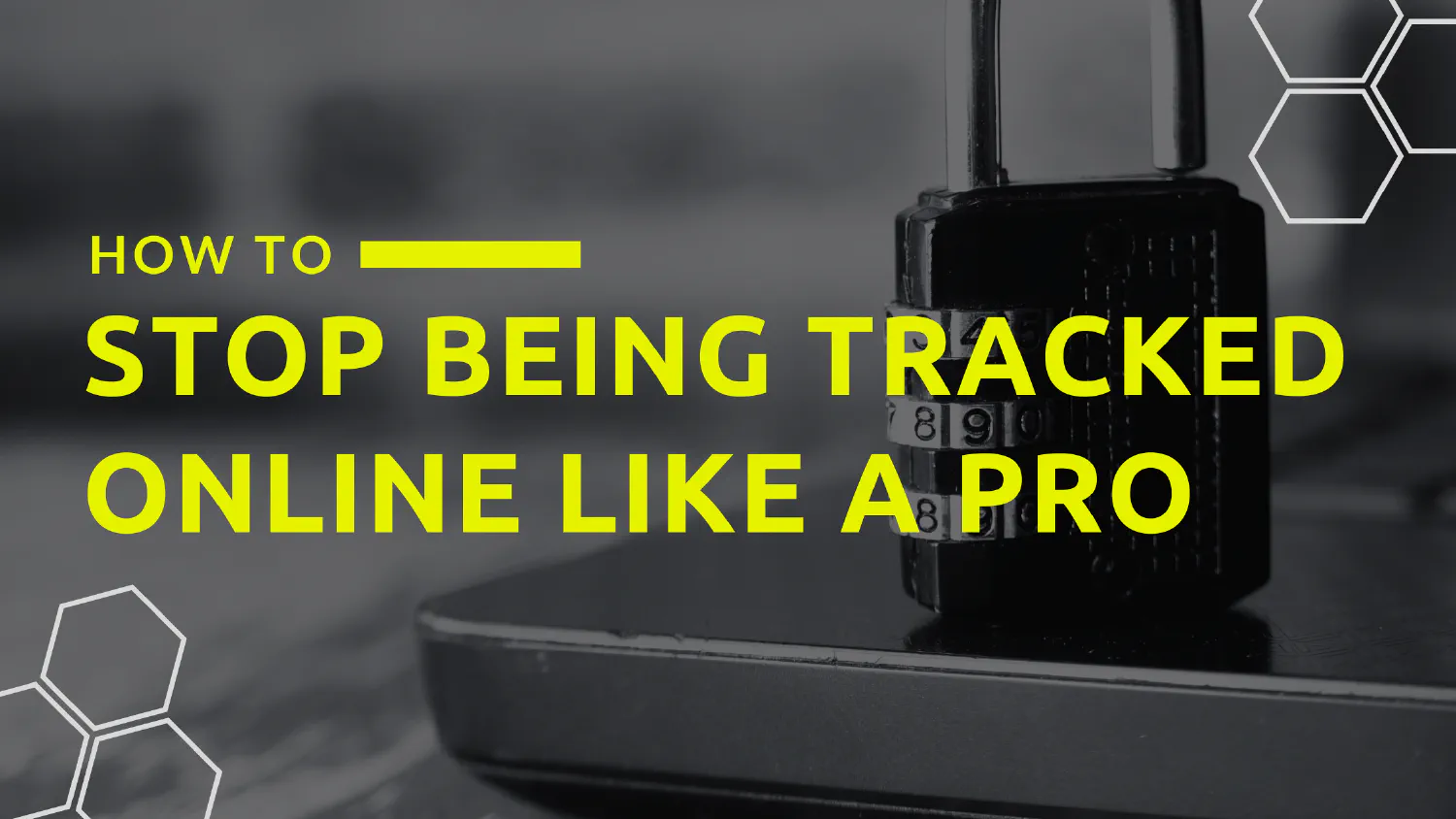How to Stop Being Tracked Online Like a Pro

In today’s digital landscape, your every click, search, and scroll can be tracked, logged, and analyzed. Websites, and advertisers are constantly finding ways to monitor and profit off of your online behavior. But you don’t have to surrender your privacy. By following some of the following strategies, you are taking effective steps to stop being tracked online like a pro.
Understand Potential Threats: What’s Tracking You?
Before diving into the solutions, it’s important to know what’s out there. Online tracking can take many forms:
- Fingerprinting: Techniques that create a unique profile based on your device’s characteristics, like your browser type, screen resolution, and installed fonts.
- Social Media Trackers: Embedded widgets like the Facebook “Like” button that can monitor your browsing even when you’re not logged into the platform.
- Advertisers: Third-party trackers that follow you from site to site to build a profile and target you with ads.
Use Privacy-Focused Browsers
Not all browsers are created equal when it comes to privacy. For the privacy conscious, consider switching to a browser designed with security and anonymity in mind:
- Firefox: With built-in Enhanced Tracking Protection, Firefox blocks many third-party trackers automatically.
- Brave: This browser blocks ads and trackers by default, offering a fast and private browsing experience.
Employ Tracker-Blocking Extensions
Even if you’re using a privacy-focused browser, it’s a good idea to add extra layers of protection with tracker-blocking extensions. Some top choices include:
- uBlock Origin: A powerful, customizable ad and tracker blocker.
- Privacy Badger: Developed by the Electronic Frontier Foundation, this tool learns and blocks trackers that violate your privacy.
- Ghostery: Offers detailed information about the trackers it blocks, allowing you to make informed decisions about what to allow.
Go Incognito – But Know Its Limits
Private browsing modes, like Chrome’s Incognito or Firefox’s Private Browsing, can prevent your browsing history from being saved on your device but they don’t stop your internet service provider (ISP), employer, or the websites you visit from tracking you. Incognito mode is a good start, but not a full solution.
Use a VPN to Mask Your Location
A Virtual Private Network (VPN) encrypts your internet traffic and routes it through a remote server, masking your IP address and making it harder for trackers to pinpoint your location or identity. Some reliable VPNs include:
- NordVPN: Offers strong encryption and a large network of servers worldwide.
- ExpressVPN: Known for its speed and robust security features.
- ProtonVPN: Built by the team behind ProtonMail, with a strong emphasis on privacy.
Opt Out of Data Collection
Many websites offer the option to opt out of data collection—though it’s often buried in their settings or inscrutable privacy policies. Look for options like:
- Do Not Track: While not universally respected, enabling the Do Not Track option in your browser can signal to websites that you prefer not to be tracked.
- Cookie Preferences: On many sites, you can customize which cookies are allowed. Disable non-essential cookies to limit tracking.
Avoid Social Media Logins
Logging into websites using your Facebook, Google, or other social media accounts might be convenient, but it also allows those platforms to track your activity across different sites. Whenever possible, create separate logins for each site instead of using social media accounts.
Regularly Clear Your Cookies and Cache
Cookies and cache data can build up over time, creating a detailed record of your online activity. Regularly clearing them can help reduce your digital footprint. However, keep in mind that doing so may log you out of websites and reset some settings.
Disable WebRTC and Location Services
WebRTC, a browser feature that allows for real-time communication, can expose your local IP address even if you’re using a VPN. You can disable WebRTC in your browser settings or use extensions like WebRTC Leak Prevent. Similarly, disable location services in your browser to prevent websites from accessing your geographic location.
Stay Informed and Vigilant
Online privacy is a moving target. As technology evolves, so do the methods for tracking users. Stay informed about new privacy tools and techniques, and be vigilant about your online behavior. Regularly check your privacy settings, update your software, and review the permissions you’ve granted to apps and websites.
Use Stealth Scan to Identify Potential Threats on Popular Websites
We built Stealth Scan to help you identify and understand the trackers on popular websites. It’s a web-based tool that scans websites for the risk of fingerprinting attempts, and third-party trackers. You can get a detailed report on the number of trackers popular websites contain, as well as their fingerprinting score based on DuckDuckGo’s Radar Tracker. This can empower you to make informed decisions about which sites to trust and how to further protect your privacy. Whether you’re curious about a specific website or want to ensure your favorite sites are respecting your privacy, we believe Stealth Scan can be a valuable resource in your digital privacy toolkit.
Conclusion
Stopping online tracking is about more than just protecting your privacy; it’s about reclaiming your digital freedom. By adopting these pro-level strategies, you can navigate the web with confidence, knowing that your data is under your control. Whether you’re a casual browser or a seasoned tech user, taking these steps will help you stay one step ahead of the trackers.
